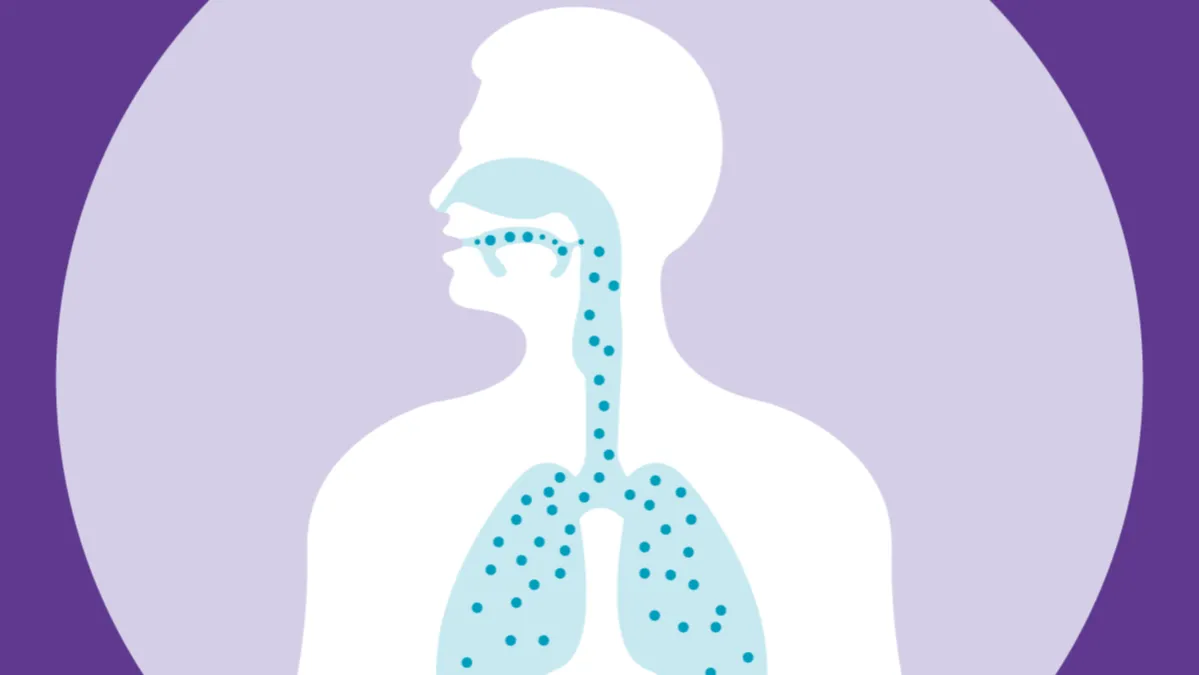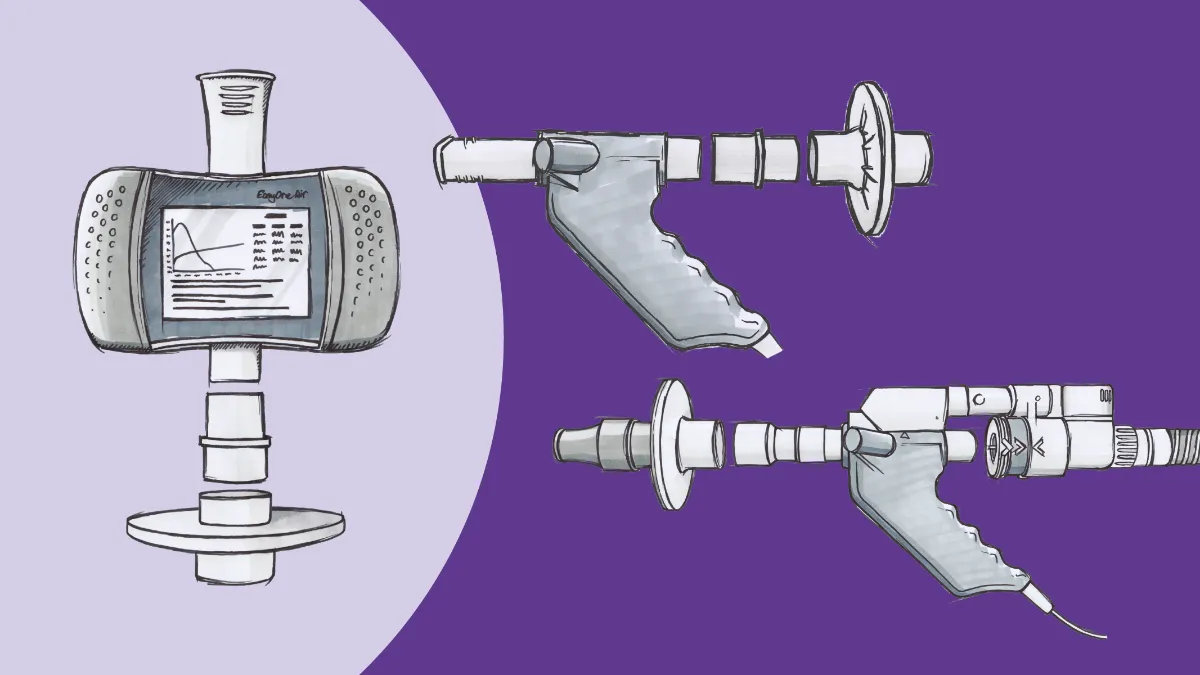DLCO's role in diagnosing pulmonary hypertension

How DLCO testing helps cardiologists diagnose pulmonary hypertension (PH) #
Like Chronic Obstructive Pulmonary Disease (COPD), pulmonary hypertension (PH) is an umbrella medical term that encompasses multiple disease conditions. While each condition is unique, there is not much overlap beyond elevated blood pressure in the pulmonary circulation.1 Thanks to advancements in technology, what was once a lethal condition is now manageable.
The precise diagnosis or correct clinical classification of pulmonary hypertension is a crucial first treatment step2. While they are similar in many ways, there are multiple differences between pulmonary arterial hypertension (PAH) and other forms of pulmonary hypertension. That said, certain treatment regimens that are efficacious with certain forms of the disease could prove ineffective or detrimental in the other. Today’s cardiologist plays a vital role in the accurate diagnosis of PH. Ultimately, the diagnosis of pulmonary hypertension can be confirmed only by right heart catheterization. However, due to the intensive nature of this procedure, it is not indicated in all patients.
One of the best tools to help cardiologists accurately diagnose PH conditions is a complete pulmonary function test including DLCO. The ndd EasyOne Pro and EasyOne Pro LAB are two user-friendly solutions that help streamline and accelerate lung function testing and produce robust and accurate results – without the need for constant calibration.
In the information below, we’ll outline the case for diagnosing pulmonary hypertension. We’ll also provide an outline of the facts surrounding PH, symptoms associated with the disease, the importance of early detection, and of course, how the EasyOne Pro and EasyOne Pro LAB can help cardiologists with this critical task.
The facts about pulmonary hypertension (PH) #
Pulmonary hypertension affects approximately one percent of the global population. The prevalence of PH in patients above 65 years of age is nearly 10 percent.3 It’s a hemodynamic state characterized by a resting mean pulmonary artery pressure (PAPm) of ≥ 25 mmHg.3 There are multiple forms of pulmonary hypertension, including the following:
- Group 1 – Pulmonary Arterial Hypertension
- Group 2 – Pulmonary Hypertension due to left heart disease
- Group 3 – Pulmonary Hypertension due to hypoxia and lung diseases
- Group 4 – Chronic Thromboembolic Pulmonary Hypertension (CTEPH)
- Group 5 – Pulmonary Hypertension triggered by other health conditions
What is pulmonary arterial hypertension (PAH)? #
Pulmonary arterial hypertension (PAH) is characterized by severe vasoconstriction and remodeling of the distal pulmonary arteries, non-compliance due to vascular fibrosis and stiffening resulting in increased pulmonary vascular resistance, and right ventricular dysfunction promoting heart failure.4 There are three variations of PAH: idiopathic, associated, and heritable.5
The most common symptoms linked with PAH include:
- Increased shortness of breath
- Fatigue
- Edema or swelling of the feet, lets, and eventually the neck and abdomen
- Chest pain
- Dizziness and fainting spells
- Heart palpitations (racing or pounding)
- Lips and fingers turning blue
However, the symptoms noted above are not specific to this disease. Worsening of symptoms occurs with disease progression and the exhibition of new symptoms such as dyspnea on bending down (bendopnea) and syncope (fainting), which tend to occur after physical exertion. Patients living with pulmonary hypertension that experience frequent symptoms can have a very high mortality rate.
What is the cause of pulmonary hypertension? #
The precise cause of pulmonary hypertension – specifically pulmonary arterial hypertension – is unknown. It is believed by researchers that injury to the layer of cells lining the pulmonary blood vessels, in concert with changes in smooth muscle cells in the vessel wall, could initiate the condition.6
While continuing research is needed to determine the root cause, some risk factors are linked to PH. Old age is a significant factor; however, PAH is more common in younger adults. Other risk factors include:
- Overweight
- Family history
- Exposure to asbestos or other occupational hazards
- Blood-clotting disorders including congenital heart disease
- Use of certain weight-loss medication
- Living at a high altitude
- Use of certain medication to treat anxiety and depression
How is pulmonary hypertension detected? #
PH is usually detected via physical and echocardiography examination. Echocardiography is a crucial test, which helps to highlight right heart overload or pulmonary hypertension. Additional investigations, including the detection of brain natriuretic peptide (BNP), is a strong suspicion of PH.
The diagnosis of pulmonary hypertension can be confirmed only by right heart catheterization. Eight modalities represent the hallmarks of PAH diagnosis:
- Clinical presentation
- Electrocardiogram
- Chest radiograph
- Echocardiography
- Ventilation/Perfusion lung scan
- High-Resolution Computed Tomography (CT), including Pulmonary Angiography and Contrast-Enhanced Computer Tomography
- Cardiac Magnetic Resonance Imaging (MRI)
- Pulmonary Function Tests and Arterial Blood Gases
The role of DLCO testing in diagnosing pulmonary hypertension #
Decreased lung diffusion capacity for carbon monoxide (DLCO) and mild to moderate reduction of lung volumes are the clinical characteristics of PAH. Although the arterial oxygen tension is normal or slightly lower than normal at resting conditions, the arterial carbon dioxide tension is reduced due to alveolar hyperventilation.
A reduction in lung volume, together with a decrease in diffusion capacity for carbon monoxide, may indicate a diagnosis of interstitial lung disease. A high-resolution CT scan can furthermore be used for differential diagnosis and determination of the severity of emphysema and interstitial lung disease.
When a cardiologist’s office has access to a complete PFT solution capable of DLCO and complete lung function testing, their ability to diagnose pulmonary hypertension is streamlined and expedited. The EasyOne Pro and EasyOne Pro LAB are two PFT testing solutions that help cardiologists with this mission.
The advantages of the EasyOne Pro & EasyOne Pro LAB #
ndd Medical Technologies has established a strong reputation for developing cutting-edge technology solutions that are user-friendly, patient-centric, and that produce consistent and quick results. Our EasyOne Pro and EasyOne Pro LAB are portable DLCO, lung volume, and spirometry testing solutions.
These PFT devices allow you to accurately measure DLCO, which is important for accurately diagnosing pulmonary hypertension and the slew of forms within its umbrella. ndd’s Pro series have a compact and lightweight design at 18 lbs., easily fitting in any office setting.
Utilizing ndd’s patented TrueFlow™ and TrueCheck™ technology, the EasyOne Pro reduces many common sources of error, saves time, and allows cardiologists to complete testing without having to send their patients to a lung-health specialist.
There are multiple benefits to using the EasyOne Pro at the cardiologist’s office #
Testing at the point of care #
Both the EasyOne Pro and Pro LAB can be operated in the office, medical exam rooms, or used in remote settings. They are 100% ready to complete testing upon start-up, without the need for initial or continual calibration.
Powerful commentator #
We developed all lung capacity testing equipment for seamless operation, created with powerful tracking tools that help to gather relevant patient data. The integrated commentator allows the cardiologist to easily define standard comments and quickly add them to the patient’s results. Operators can likewise quickly select or deselect predefined comments, or quickly modify comments.
Always safe & ready to test #
TrueCheck technology takes care of the essential quality control for gas analysis testing. EasyOne Pro and EasyOne Pro LAB are virtually calibration free with proven long-term stability. In addition, they feature:
- Checks gas-sensor linearity and delay
- Checks for leaks and gas concentration
- Patented technology and Swiss engineering
The ultimate lung health solution for cardiologists #
The EasyOne Pro and EasyOne Pro LAB are exceptional devices to help diagnose pulmonary hypertension and represent a complete lung health testing solution. Since there is a significant link between cardiovascular and lung disease, having access to a robust PFT device that offers DLCO, lung volumes, LCI, and spirometry testing at the point of care, can help to improve patient health.
If you’d like to explore the competitive advantages of ndd Medical Technologies lung health technology, please click on the products below.
Plantier L, Cazes A, Dinh-Xuan AT, Bancal C, Marchand-Adam S, Crestani B. Physiology of the lung in idiopathic pulmonary fibrosis. Eur Respir Rev. 2018;27(147). ↩︎
Pulmonary hypertension. Web site. https://www.mayoclinic.org/diseases-conditions/pulmonary-hypertension/symptoms-causes/syc-20350697. Accessed. ↩︎
Hoeper MM, Ghofrani HA, Grünig E, Klose H, Olschewski H, Rosenkranz S. Pulmonary Hypertension. Dtsch Arztebl Int. 2017;114(5):73-84. doi:10.3238/arztebl.2017.0073 ↩︎ ↩︎
Lai YC, Potoka KC, Champion HC, Mora AL, Gladwin MT. Pulmonary arterial hypertension: the clinical syndrome. Circ Res. 2014;115(1):115-130. ↩︎
Austin ED, Loyd JE. The genetics of pulmonary arterial hypertension. Circ Res. 2014;115(1):189-202. ↩︎
9500 Euclid Avenue C, Ohio 44195 | 800.223.2273 | © 2021 Cleveland Clinic. Pulmonary Hypertension (PH). In. ↩︎









